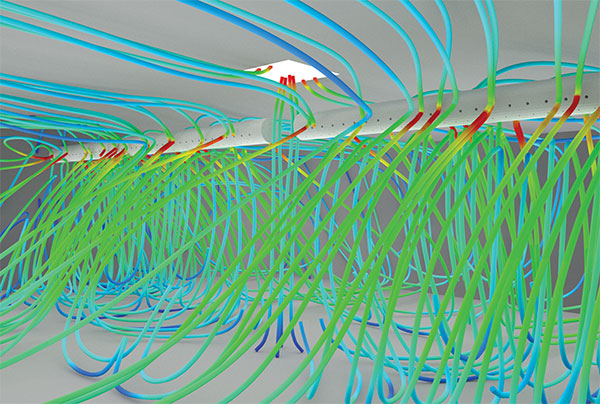
Using simulation and modeling to improve sustainable buildings
Insurmountable data is no match for Baskar Ganapathysubramanian. In fact, he says the more data, the better. That way he’s sure to evaluate every possible scenario within the models he creates.
Ganapathysubramanian, associate professor of mechanical engineering, uses mathematical techniques and computational tools to solve a variety of real-world phenomena.
He’s especially interested in applying this technology to energy and the environment, like he’s doing with a project that studies how energy is utilized in buildings.
He says he was initially inspired to research the topic after reading the National Academy of Engineering’s Grand Challenge to restore and improve urban infrastructure. “When I saw that approximately 45 percent of the national energy budget is used to heat and cool buildings, I knew that even the smallest improvements in energy efficiency could have a substantial impact in terms of saving costs and use of nonrenewable resources.”
Ganapathysubramanian uses modeling and simulations to investigate ways to improve design for new sustainable buildings as well as to augment existing building controls. His end goal is to improve the use of natural flows within these structures.
So far, his group has spent time understanding how beehive-shaped mud houses in Harran, Turkey, control internal temperature without any powered conditioning. Additionally, the team has looked at Iowa State University’s solar-powered Interlock House to determine the best ways to allow for natural ventilation. Another project has researchers evaluating ideal locations for air quality sensors.
“Performing this work without a computational framework requires a great deal of time and painstaking measurements to explore a select few scenarios,” he explains. “In our case, however, after we create a model of a building, we can make endless changes to our settings to determine how to make it more sustainable. The ideas we are generating, once implemented, are going to have a substantial impact on the building design and energy market.”
Creating these models is no easy task. Modeling fluid flows, such as natural ventilation, is incredibly difficult, and it often results in various levels of approximations because of the complexity of the flows.
Ganapathysubramanian says an intersection of unique developments at Iowa State supports the mathematics behind his work and has led to even better results for his research. He is also thankful for the various collaborative activities that ISU enables and supports.
Most of the building research is in collaboration with Ulrike Passe, associate professor in architecture, who is interested in leveraging mathematical models to understand and design sustainable buildings.
Collaborating with Ming-Chen Hsu, assistant professor of mechanical engineering, Ganapathysubramanian has created a framework for modeling natural flows in complex geometries. Hsu is currently looking at incorporating his immersed-modeling method that takes a complex geometry and immerses it in a cube, thus allowing the team to explore a variety of complex geometries in a straightforward way.
Umesh Vaidya, associate professor of electrical and computer engineering, helps with understanding how to control and sense the flow physics. Together with Ganapathysubramanian, they have created a rigorous framework for rapid (real-time) contaminant analysis and sensor placement strategies.
These mathematical methods and tools also have utility in other areas of energy and sustainability. Ganapathysubramanian works with ISU agronomists (like Pat Schnable and Asheesh Singh) to apply similar tools to improving agricultural productivity.
Ganapathysubramanian adds that the tools and methods are the foundation to significant improvements in science. “As we use these technologies across disciplines, we’ll see that having more time available to spend on analyzing a wide range of scenarios leads to superior end products.”